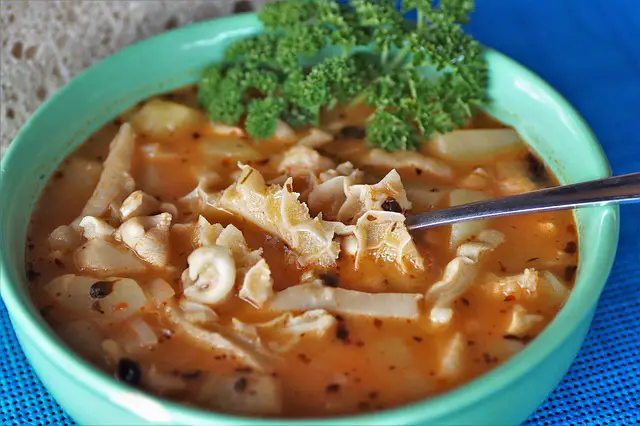Your cat has the ability to break down a diverse range of foods, providing them with the nutrients they need. Among those that have benefits for your cat’s health and organs, including hearts and gizzards.
If you love to give your cat great meals that boost their gut health, then here is how you can cook up something they’ll love.
Are hearts and gizzards good for cats?
Chicken hearts and gizzards are full of healthy substances that promote a healthy diet for your cat. They have lots of vitamins including B and C, as well as low fat and pieces of connective tissues. Not only are both hearts and gizzards appetizing to your cat but will also promote a healthy digestive system too.
How to cook chicken hearts and gizzards for cats
Knowing that these organ meats are both appetizing and healthy, you may want to switch up your cat’s feeding routine. There are a few ways that you can cook chicken hearts and gizzards, two of which we’ve listed below.
Why cook organs?
Before getting into the recipe, let’s first take a look at the importance of cooking raw meats for your cat. While cats have the ability to break down raw foods, domesticated cats may have trouble.
Many times, they get used to a diet full of cat food, which doesn’t promote enzymes and microbes that break down more complex foods. Cooking organ meats will aid in the digestion process, making them easier to break down. The easier it is to break down, the more nutrients that are made available.
Savory Ways to cook organs for your cat
Whipping up some grub for your cats is simple. If you’re looking for a way to jumpstart their nutrition and give them something tasty that they’re guaranteed to enjoy, try out these ways of cooking chicken hearts and gizzards.
Method #1. Boiling
Boiling chicken hearts and gizzards are fairly simple and take little to no time at all. Try it out the next time you want to give your cat savory treats they’re sure to love.
What you’ll need:
– 6 oz. of gizzard and heart meat
– Water
– A shallow pot
To prepare:
– Start by bringing about 2 cups of water to a rolling boil
– Prepare organ meats by chopping them into small bite-sized pieces and removing any excess fat
– Add the organ meats to the pot and let boil for about 5 minutes
– Remove and let cool
– Separate them into two bowls (3 oz. each)
Method #2. Sauté
Sautéing meats bring out the natural juices and put a light crisp on the outside that will make them irresistible to your cat. To take their mealtime up a notch, try out this method for preparing chicken hearts and gizzards.
What you’ll need:
– 6 oz. of heart and gizzard meat
– A sauté pan
– A teaspoon of oil (try avocado or olive oil for healthy fats)
To prepare:
– Start by preparing the chicken hearts and gizzards. Chop them into bite-sized pieces and remove any skin or fat that has accumulated.
– Add the sauté pan to the stove and turn on medium-high
– Add the oil and allow it to get warm
– Add the meats and cook until browned (about 6 minutes) flipping them occasionally to get an even cook
– Remove from heat and let them sit
– Place 3oz. of the cooked mixture into two containers
How many gizzards and hearts should I feed my cat?
Your cats are sure to love cooked organ meats, begging for them from now on. While they are tasty and addicting for your cats, you want to watch the number of servings you give them per week, making sure it doesn’t exceed three.
If you have a cat that’s used to dry or canned foods, you should start by gradually introducing chicken hearts and gizzards into their diet little by little. Try once a week to see how they react and ensure that they can digest properly.
After a small period of adjustment, you can start to increase the number of times a week up to three, not exceeding that. Organ meats need to be no more than 15% of your cat’s diet, so be sure to keep track and don’t overfeed them.
Things to avoid when cooking organ meats for your cat
If you’re new to cooking organs for your cat, you’re sure to become an expert quickly. It’s simple, fun, and will give your cat a meal that they love. When cooking for your cat, here are some key things you want to avoid.
Not allowing time to cool
As soon as you set the organ meats in front of your cat, they will start to devour it, not stopping even if it’s too hot. Avoid burning of their mouth or tongue by letting them cool enough for safe eating. Wait as long as it takes, even if your cars are meowing at you.
Seasoning
Seasonings are not a cat’s forte, so be sure to leave them off. Plus, added salts can be harmful to your cat, so be sure to avoid them at all costs.
Overfeeding
Even if your cat is begging for more, keeping their food intake at a level that’s healthy is crucial. Don’t overfeed them and resist the urge to buy into their manipulative (but cute!) tactics.
[su_box title=”Affiliate Disclosure”]This website is supported by its readers. Please assume that all links are affiliate links. If you make a purchase from one of the links we will make a commission from Amazon. Thank you.[/su_box]




